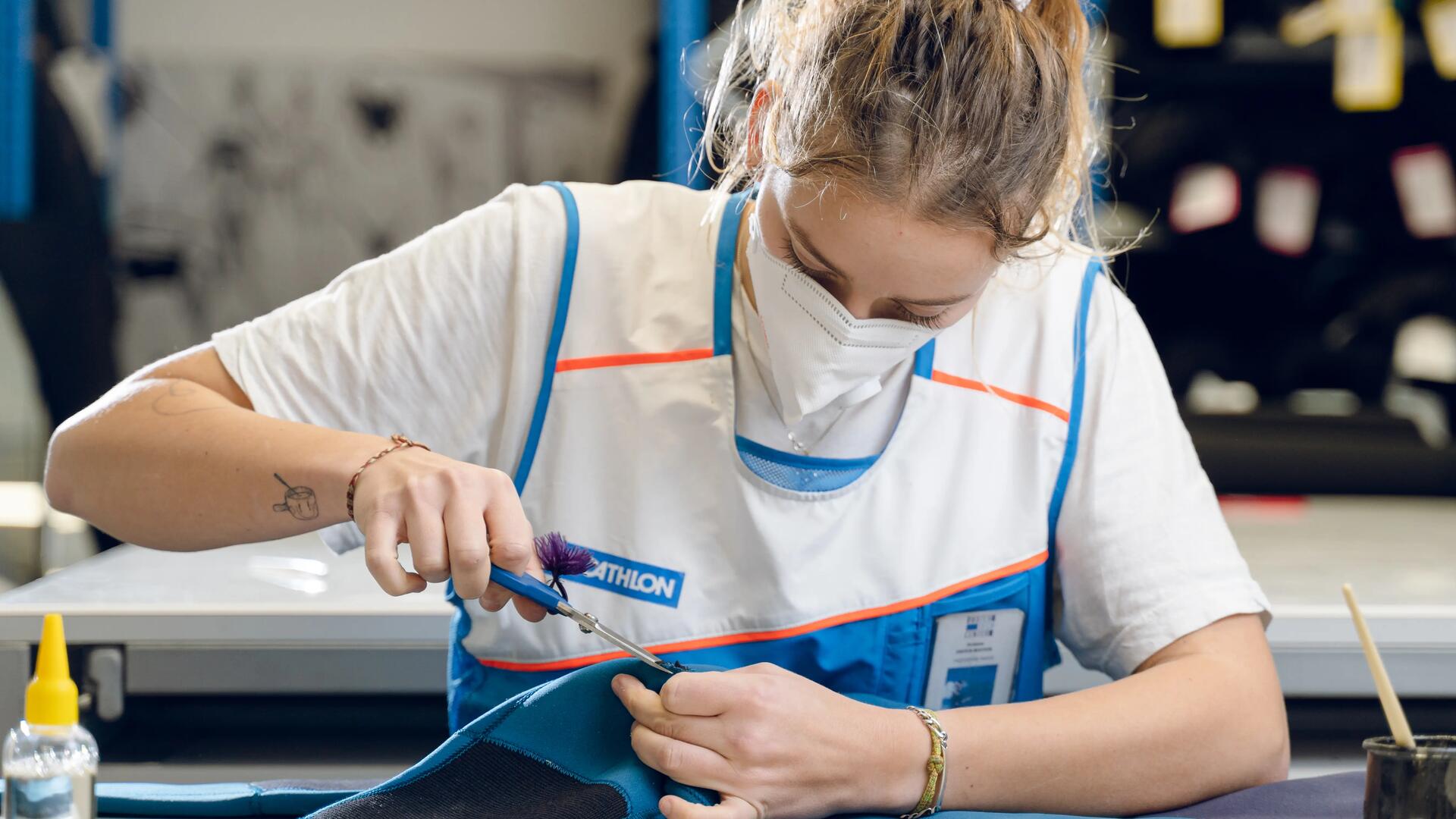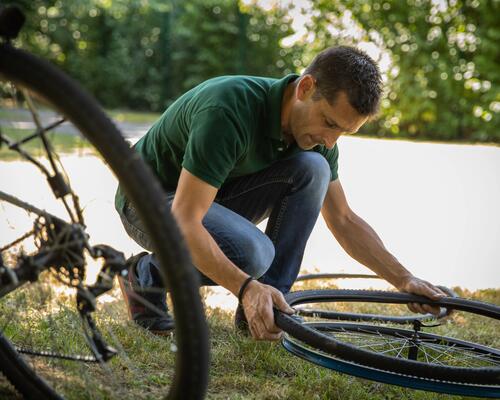Replace a button
It’s never too late (or too early) to learn how to sew on a button. A useful skill for life!
Sew on a button
Prerequisite: Comfort with a needle and thread.
1. Cut about 60 cm of thread and fold it in half.
2. Tie a knot (on the end with two threads), then thread the needle using the folded end.
3. Stitch from the inside to the outside of the material where the button will go.
4. Thread the button onto the needle, then pass the needle back through the hole opposite the first.
5. Continue sewing until the button is solidly attached (about five crosses). Don't overtighten: remember to leave a small space between the button and fabric for easier buttoning.
6. Tie off the thread on the inside of the material, then cut off the excess thread.
Estimated time: 5 minutes






